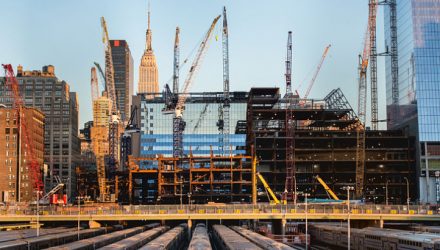“In the United States, the neglect of infrastructure is glaringly apparent. The American Society of Civil Engineers (ASCE), which evaluates both the condition and performance of the nation’s infrastructure in the familiar form of a school report card, gave the United States a “D+” overall. The ASCE also estimated the United States needs to spend $3.3 trillion on infrastructure through 2025, with a funding gap of $1.4 trillion (2016 report “Failure to Act”),” according to Franklin Templeton research.
ETF investors who are wary of additional currency risks can also take a look at the recently launched Deutsche X-trackers S&P Hedged Global Infrastructure ETF (NYSEArca: DBIF), which includes similar exposure to IGF and GII, except DBIF tries to mitigate the negative effects of falling foreign currencies.
But when it comes to infrastructure ETFs, it is usually about government spending and how quickly those increases can be implemented. Actually, increases would be a good thing because infrastructure spending has been steadily declining for decades in developed markets.
“Since 1970, public (or governmental) allocations to infrastructure investments have declined markedly in developed economies, dropping from 5.2% to 3.3% of real gross domestic product (GDP), according to data provided by the Organisation for Economic Co-operation and Development (OECD) and Bureau of Economic Analysis,” said Franklin Templeton.
For more information on the infrastructure sector, visit our infrastructure category.
